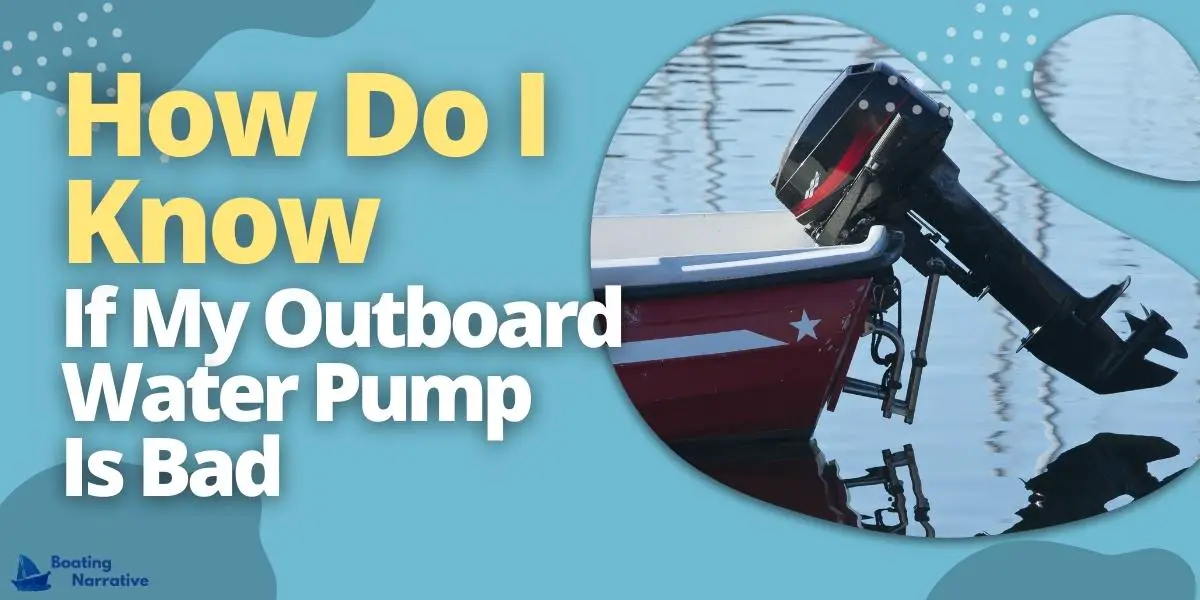If you’ve ever owned a boat, you know that they require much maintenance. One of the most critical parts of your boat is the outboard water pump. The water pump circulates water through the engine to keep it cool.
If the water pump fails, the engine will overheat and can be damaged beyond repair. So, it’s essential to know the signs of a bad water pump and how to prevent it from happening.
This article will give you some tips on how to tell if this is the case and what to do next.
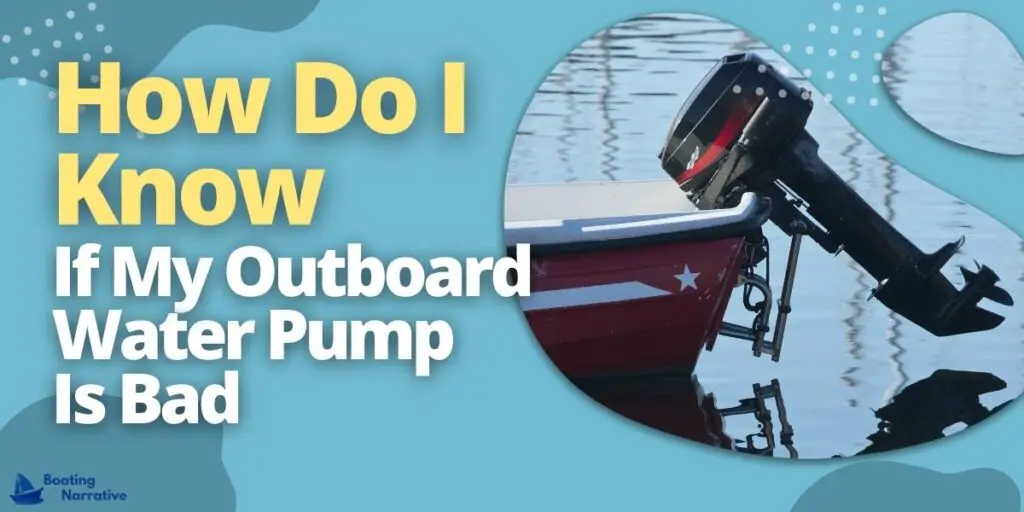
Here’s What You Need To Know About How to Know If Your Outboard Water Pump Is Bad:
The easiest and most direct way to know if your outboard water pump is broken is to remove it and inspect the impeller. If the impeller is damaged or worn, it must be replaced.
If your outboard boat engine is repeatedly overheating, your water pump could be the culprit. An overheating engine means that the pump’s drive belt has broken or is slipping. If, when the engine is idling, the middle of the water hose is warm, the pump may be broken.
Here Are Some Signs that Your Outboard Water Pump Is Going Bad or Has Gone Bad:
1. The Impeller Is Damaged or Worn Out
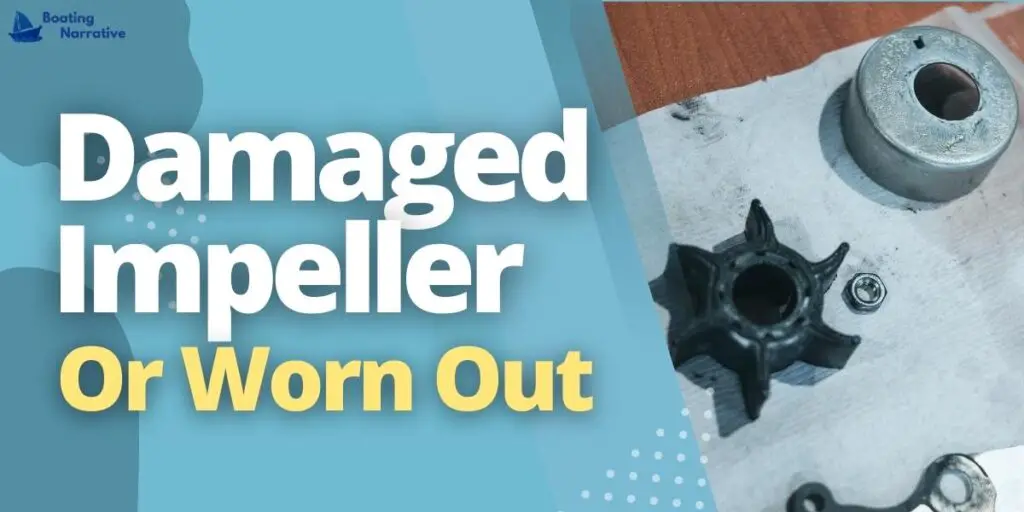
If you notice a loss of water pressure coming from your outboard motor, it could be a sign that the impeller is damaged or worn out.
- Another sign of a bad impeller is if you see a steady stream of water coming from the lower unit of your outboard motor.
- If your outboard motor is not pumping a steady stream of water, it could overheat and cause damage to the engine.
If you notice any of these signs, it is essential to have the outboard water pump impeller replaced as soon as possible.
2. The Vanes Are Damaged or Broken
If the vanes on your outboard water pump are damaged or broken, it’s likely that the pump is not working correctly. The vanes are what give the impeller its flexibility, and without them, the impeller can’t root through the water and create the necessary water stream.
This could cause your water pump not to work correctly; check the manual to see if there are any instructions on how to fix it. If not, it’s probably best to take it to a professional.
3. There Is Physical Wear on The Pump Housing or Impeller Hub
There are a few things you can check for to see if your outboard water pump is broken. First, check for physical wear on the pump housing or impeller hub. If you see any damage, it’s likely that the pump needs to be replaced.
The pump may also start to make noise or vibrate more than usual. If you notice any of these signs, it’s essential to take your outboard to a qualified marine mechanic for repair or replacement.
4. There Are Leaks Around the Shaft Seal or Gasket
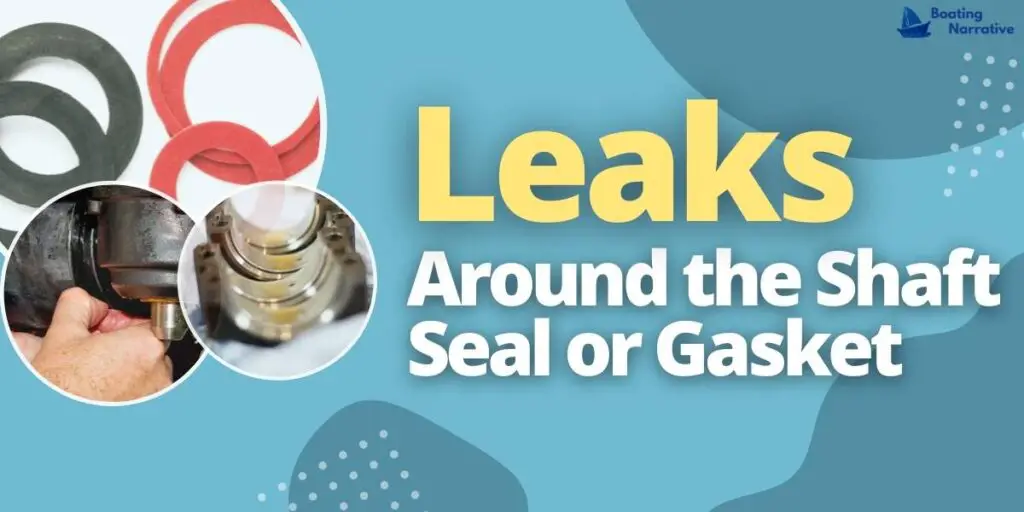
If you notice leaks around the shaft seal or gasket, this is a sign that your outboard water pump may be broken. The driveshaft on your boat motor turns the pump impeller, which pulls in water from the inlets and forces it out through the cooling water outlet.
If the shaft seal is damaged, water can leak out and cause the pump to overheat.
If you suspect your outboard water pump is broken, remove the pump cover and check the impeller for damage. It is necessary to replace the impeller if it is damaged. If the shaft seal is damaged, you will need to replace that too.
5. The Water Flow Is Reduced, or The Pressure Is Low
If you notice that the water flow from your outboard’s raw water pump is reduced or the pressure is low, it’s likely that the pump is beginning to fail.
A bad outboard water pump can cause permanent damage to your engine if it’s not replaced, so it’s important to know the signs of a failing pump.
- Some outboards have an impeller that needs to be replaced at least once a year, but it’s a good idea to check it more often.
- If you notice any damage to the blades, or if the pump isn’t moving as much water as it used to, it’s time to replace the impeller.
- If your outboard is getting less water than usual, it’s also a sign that the water pump needs to be replaced.
6. The Hose Fittings Are Loose or Damaged
If the hose fittings are loose, it’s likely that the pump still works, but it’s a good idea to check it every year or so. If the mating surfaces are damaged, you may be able to see score marks or other damage.
If the hose is damaged, you may see damage to the pump itself.
7. The Impeller Vanes Are Not Flexible Anymore
One of the simplest methods to tell if your outboard water pump is broken is if the rubber impeller is no longer flexible. This is usually due to the vanes on the impeller being worn down from rotation. If you see any of these indicators, it’s likely time to get a new impeller.
8. The Muffs (water Intake Covers) Are Loose or Missing
If the muffs (water intake covers) on your outboard motor are loose or missing, it’s a sign that your water pump may be broken. The water pump is responsible for circulating water through the engine to keep it cool. If it’s not working properly, the engine can overheat and damage itself.
What to Do when Outboard Water Pump Has Gone Bad?
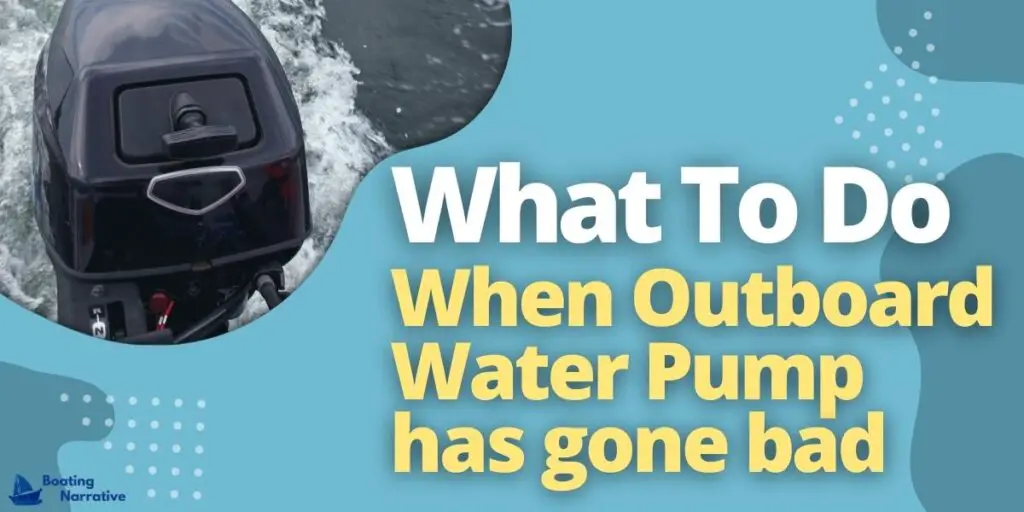
If the water pump on your outboard motor has gone bad, there are a few things you can do to troubleshoot the issue.
- First, check the water intake to make sure there is no debris blocking the flow of water into the pump.
- Next, check the impeller to see if it is damaged or broken.
- If the impeller becomes damaged, it must be replaced.
If the water pump is still not working after these troubleshooting steps, it will need to be replaced.
Are Outboard Water Pumps Easily Accessible?
Outboard water pumps are not difficult to access for the average do-it-yourselfer. In most cases, all you need is a large screwdriver and an open-ended wrench. The pump is located on the top of the lower unit, just behind the propeller.
If your outboard is more than a year old, it’s a good idea to check the water pump at the beginning of the season. Even if the pump looks fine, it’s a good idea to check it for wear and tear. The impeller, or rubber blades, are the most likely to need replacing.
Water Pump Change Frequency
Your outboard water pump should be serviced every 150-200 hours of operation or once every two months- whichever comes first.
If you see a reduction in performance, or if the pump is making weird noises, it’s time for a change. Moreover, a water pump that’s out of balance can lead to poor boat performance.
How Much Does Outboard Water Pump Repair Cost?
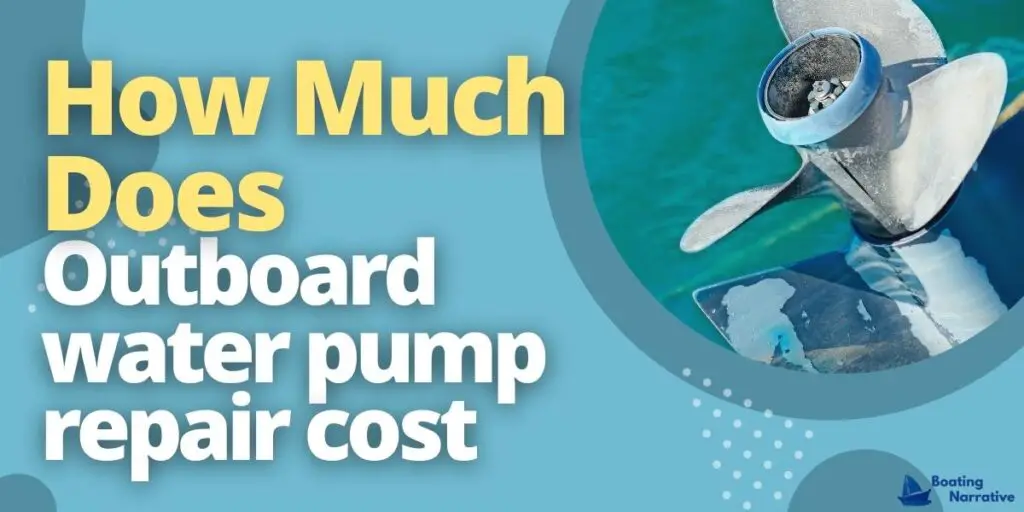
The average price is $150-240, on average. Some are hundreds more, depending on the impeller wear or damage and where you purchase it.
Most shops charge between 80% to 160% over wholesale prices; some even as high as 300% with a lot of companies these days! Points To Remember:
- Always have an outboard pump checked by a qualified technician before making any repairs;
- Water pump impellers should be replaced every 150-200 hours of operation or once every two months, whichever comes first.
These services should average around $150-240, with the vast majority being in the lower price range; however, there are a few outlier cases ( impeller wear or damage ) that can pump the repair price up to 300% over what you would expect.
The Bottom Line: While water pump repairs will not always be easy or cheap, it is important to have your outboard regularly serviced by a qualified technician in order to avoid costly problems down the road.
Who Should Perform the Repair?
If the outboard water pump is less than five years old and has a warranty, most boat manufacturers will cover the repair. If it’s older or not under warranty, you’ll need to find a qualified technician to do the work.
Points To Remember: Always have your outboard pump checked by a qualified technician before making any repairs; water pump impellers should be replaced every 150-200 hours of operation or once every two months, whichever comes first.
Preparation for Outboard Water Pump Repair
Before you even think about attempting a water pump repair, it is important to prepare your boat for the work. This means ensuring that all of the necessary hardware and parts are available before starting anything, as well as having an idea of what work needs to be done in order to get your outboard pump back up and running.
If you’re not familiar with outboard water pump repairs or own a boat that is less than five years old, you should take the boat to a mechanic in your area who is experienced with water pump repairs and outboard pump impeller replacements and custom modifications.
If you have an older engine or many hours of operation on your outboard water pump before it failed, then the repair should be easy for most qualified technicians; however, if there is damage, then those parts are difficult to find.
The Consequences of Using a Bad Water Pump
If you’re using a bad water pump, there are a few consequences you may experience. Your boat may not be able to reach its top speed, or it may overheat. Additionally, you may damage your engine by running it without enough water.
Make sure to check your water pump regularly to avoid these consequences. If your pump is bad, the water pump impeller and water pump housing may be damaged; if you overheated the outboard engine, then the impeller disk in the water pump might have warped.
How to Avoid Outboard Water Pump from Going Bad?
Here are some tips to avoid having your outboard water pump go bad:
- Do regular maintenance on your outboard motor, including greasing the driveshaft, checking the coolant level, and lubricating the upper oil-level plug.
- Inspect the water pump for corrosion and replace the sealant if necessary.
- The most obvious technique to determine whether or not your water pump needs to be replaced is if it is leaking coolant.
- If your water pump is making noise, it is likely not working properly and will need to be replaced.
What Are the Steps to Take in Order to Maintain Your Outboard Water Pump and Prevent It from Breaking?
- Check the water pump impeller for wear
- Clean and lubricate the water pump impeller
- Inspect outer housing of water pump for corrosion
- Replace the water pump impeller if necessary
- Lubricate upper oil-level plug
- Check coolant level and top-off as needed
- Regularly inspect the outboard motor for signs of wear and tear
How to Clean Your Outboard Water Pump
Here are the steps to clean your outboard water pump:
- Remove the impeller by unbolting it from the water pump housing.
- Fill a pot halfway with hot water and pour it over the impeller, and immerses it in for about 10 minutes.
- Remove the impeller and allow it to cool slightly before putting it back on the water pump housing
- Run water over the impeller housing from all sides to flush out any debris
- Clean the housing and impeller with a degreasing cleaner
- Allow the impeller to dry before re-fitting it onto the water pump housing
Benefits of Regularly Checking the Coolant Level
Checking the coolant level in your outboard motor can help identify problems early, such as a water pump going bad. By checking the coolant level regularly and top-offing it if necessary, you’ll extend the life of your outboard motor.
Some of the benefits of regularly checking your outboard motor’s coolant level include:
- Avoiding costly repairs: If the coolant level in your outboard motor is low, it can cause damage to the engine. This damage can be expensive to repair.
- Increasing the engine’s lifespan: An engine that is well-maintained will last longer than one that is not checked on a regular basis.
- Preventing engine failure: If the coolant level in your outboard motor gets too low, it can cause the engine to fail. This can be an expensive and inconvenient problem to deal.
Things You Should Do when Your Outboard Water Pump Starts Making Noise
If you notice that your outboard water pump is making a noise, there are a few things you should do:
- Check the coolant level in the motor. If it’s low, add enough water to reach the proper level and top off the tank.
- Check the water pump impeller to see if it is damaged or if debris is blocking it from spinning.
- Inspect the impeller for wear or damage. If there is any damage, replace the impeller as soon as possible.
- Check the water pump drive gear for wear or damage. If there is any visible damage, replace the water pump drive gear.
- Check for leaks around the impeller housing and sealant joints. Repair any leaks as quickly as feasible.
Conclusion
Maintaining your outboard water pump is important for keeping your engine running smoothly and preventing costly repairs. By regularly checking the coolant level, you’ll be able to avoid problems down the road and keep your motor running at its best.
If you see that your outboard water pump is making a noise, it’s important to take action right away. By checking the coolant level and impeller, you can determine whether or not the pump is damaged. If so, you’ll need to replace it as soon as possible.
In conclusion, water pump maintenance is very important in outboard boat repair -prevent water pump failure and damage by regularly checking the impeller and coolant level.
Respect for the outboard water pump should be achieved through regular workflow checks to prevent engine failures or other damage that can seriously endanger your boat.

